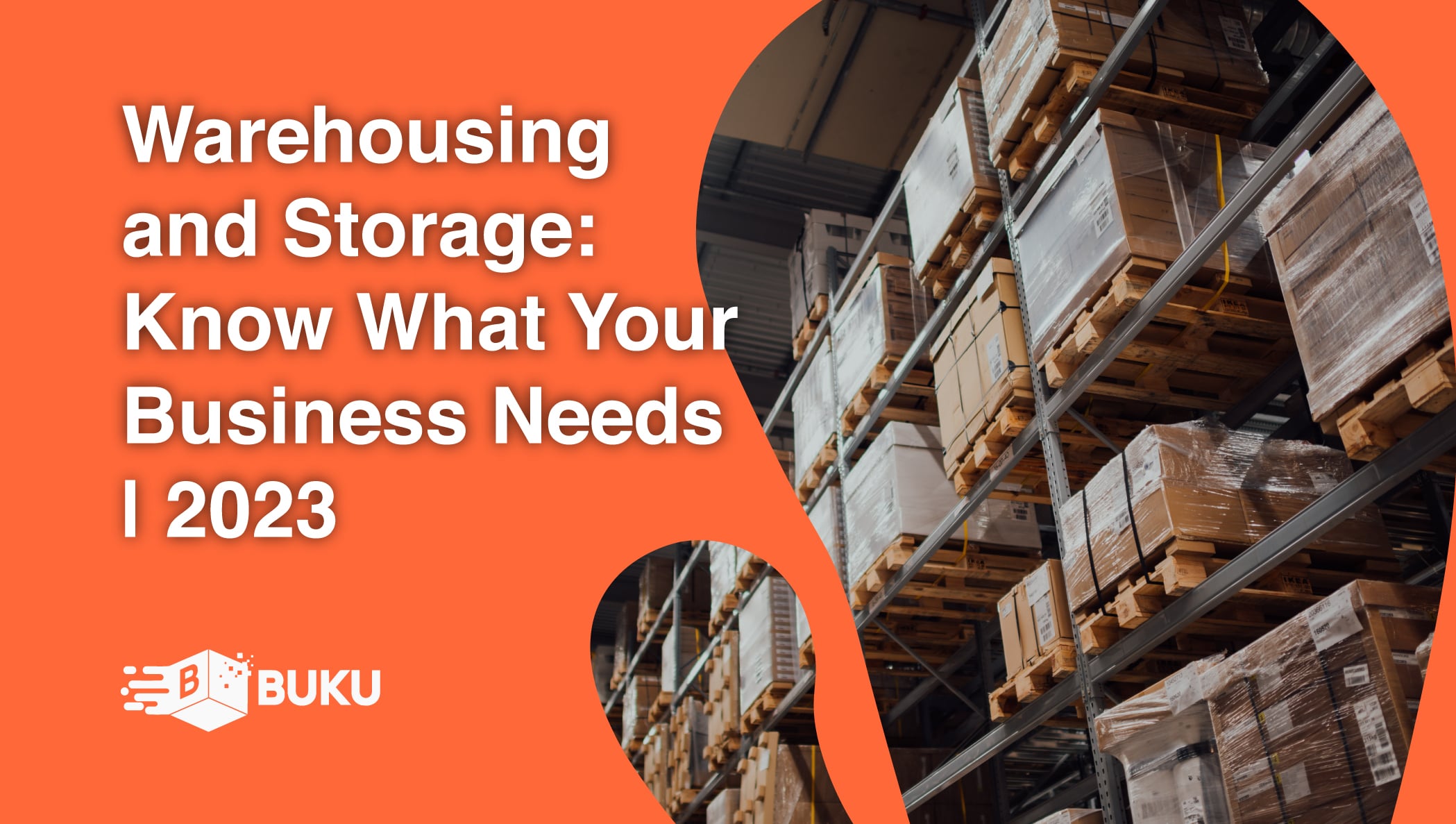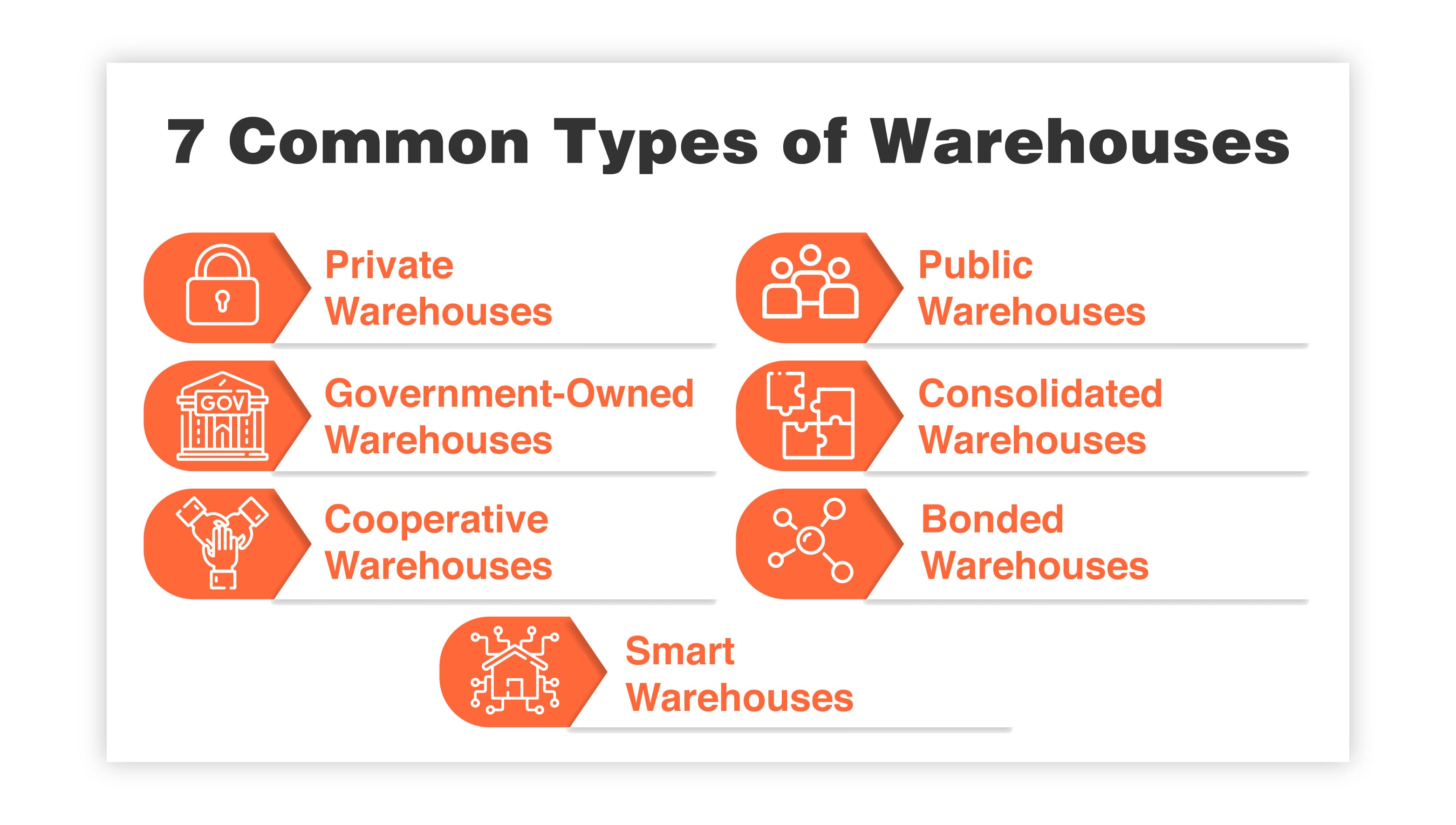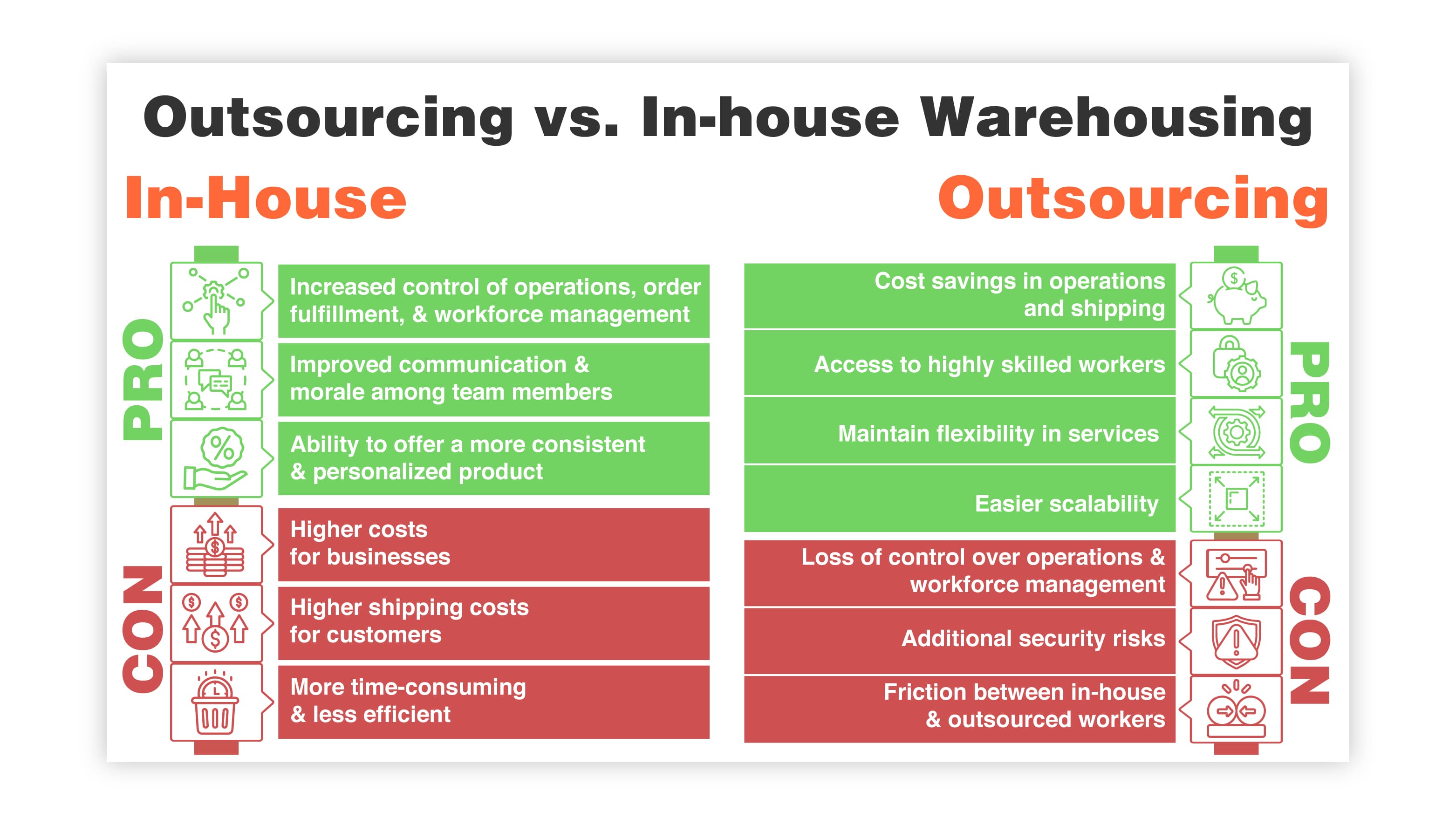Cold Chain Logistics: Management Challenges & Solutions
The supply chain is a term used to describe all the components required to transport goods from beginning to end, from production to the end...
11 min read
 BUKU Marketing
:
Aug 30, 2023 1:00:00 PM
BUKU Marketing
:
Aug 30, 2023 1:00:00 PM

The eCommerce business is all about selling. Many eCommerce business owners overlook the importance of inventory management.
Table of Contents
1. Types of Warehousing & Storage Options
2. Benefits of Using a Warehouse
3. Factors to Consider In Choosing Warehousing & Storage
4. Inventory Management & Organization
5. Technology & Automation in Warehousing
6. Warehouse Security & Safety
7. Outsourcing vs. In-house Warehousing
Smaller companies might get away with a fly-by-night inventory system. As the business grows, the need for a comprehensive warehousing and storage solution will become apparent.
The truth is that every eCommerce company can benefit from inventory management. And in today’s eCommerce environment, that requires more than paper and pencil.
Technological advancements have made it possible for eCommerce owners to use streamlined systems that integrate inventory management and order processing.
Statistics show that companies can gain a 25% boost in productivity and a 30% increase in stock efficiency when implementing integrated order processing and inventory systems. Inventory management is crucial for businesses.

It helps optimize costs and minimize losses. It improves order accuracy and product availability, which leads to happier customers. And in the long run, it streamlines overall business operations and increases profitability.
This article will detail all you need to know about warehousing and storage systems so that you can make the best choice for your business.
Global eCommerce sales are expected to hit $6.07 trillion in 2024. This staggering growth has prompted similar increase in the warehousing industry, which hit a value of $36.6 billion in 2022. Like the businesses they support, warehousing and storage solutions can range in size and complexity.
Choosing the correct type of warehouse is critical for an eCommerce business. You don’t want to spend money on space and services that you don’t need, but you also want to avoid underspending and losing out on some of the benefits that are out there, like improved efficiency.
Plus, consider choosing a warehouse that can grow with your business. Below are eight common types of warehouses and an explanation of their differences.

Larger companies often spring for their own dedicated warehouse spaces. The same is true for manufacturers, distributors, and wholesalers – businesses that need a lot of room for substantial inventory.
A public warehouse is owned by a governmental body, and space is rented out for personal or business use. These public warehouses are often cost-effective for smaller businesses that need help to support a dedicated building.
Like a public warehouse, a government-owned warehouse takes oversight a step further. While offering affordable business rates, a government-owned warehouse is directly controlled by the body itself. That means any failure to pay could result in that body selling off a business’s inventory to make up the difference.
A consolidated warehouse is used as a transfer station for goods. Shipments come from various suppliers to the warehouse and are consolidated into larger shipments that go to buyers.
These warehouses are more suited for brick-and-mortar locations because they are limited in their delivery area by place. An eCommerce business with many customers in a specific place, like a big city, might benefit from the cost savings of a consolidated warehouse.
A co-op is a group of businesses working together. In the case of a cooperative warehouse, those businesses or organizations share the space, and cost, of a warehouse to store goods. Sharing is common among companies which produce their goods, like farmers. Members of the co-op get a discounted storage rate.
Bonded warehouses are helpful for companies that do international business. They offer a place to store imported goods and avoid paying customs duties until the products are needed. Bonded warehouses also provide a holding space for goods that might be restricted or need extra oversight.
A smart warehouse typically uses the most innovative technology and automation in its day-to-day operations. These types of warehouses go beyond the typical inventory management systems. They use advanced automation systems and even robotic drones to do much of the work of picking, packing, and transporting goods.
So, how do you know when to move your inventory out of your garage and into a dedicated warehouse space?
It can be hard to see the pros and cons when making a decision guaranteed to cost you money.
However, if you consider all the benefits available to your business, it will become apparent how much there is to gain by utilizing a warehouse and storage space.

Retail is an uncertain industry, punctuated by hectic seasons interspersed with some not-so-busy months. It can be hard to meet demand, keep products in stock, and maintain an accurate inventory count without the suitable systems in place to do it.
A warehouse offers you the ability to maintain a more precise and accurate inventory system and, therefore a better ability to meet customer demand.
Add up all the minutes you spend dealing with inventory and order fulfillment. These tasks can quickly become overwhelming if you’re doing any serious sales volume. Now imagine handing over all that work to someone else with the training and experience to do it efficiently. Suddenly you have lots of free time to work on other growth-related activities.
A warehouse will indeed represent an upfront cost. That cost can be significant depending on the type of warehouse you choose and the services provided. However, as a business grows, there will be an increased need for labor, picking, packing, shipping, and other logistics-related activities.
Consolidating these costs into a single block can save businesses money. Not to mention increased efficiency usually means fewer mistakes, which can save an eCommerce business both money and customers.
Speaking of customers, the typical online consumer is more demanding than ever. Big online retailers like Amazon and Alibaba have made competing harder for the little guy.
Fast and accurate deliveries are necessary today, as is the ability to keep customers informed throughout every process. A warehouse management system can provide that for you, meaning happier and more satisfied customers who are more likely to offer your return business.
Retail is about revenue – selling products to customers and still having profit left over afterward. Forecasting and meeting demand, keeping products in stock, and offering quick, affordable shipping and delivery will ensure that your sales outweigh your expenses.
Choosing a type of warehouse and storage solution is only one factor to consider. When it comes time to decide, there are many details to consider.
Location, services provided, and overall cost are just a fraction of the factors that can affect whether a warehouse is beneficial or hindering a business’s ability to be successful.
Below are a few questions you will need to answer to make the smartest choice.

The upfront cost of a warehouse is typically one of the biggest roadblocks for small businesses. Be aware of all the individual items on that warehousing invoice so there are no surprises. Warehousing rent rates will vary depending on the warehouse's type and size and location.
On top of that, businesses will be responsible for paying taxes and other governmental fees. It might be worth doing a little research to see if any incentives are available for small businesses to save some bucks.
Whether you’re paying the warehouse staff out of your pocket or the cost of labor is factored into the rent payment, the truth is that those labor costs are passed onto you one way or the other. Warehouses in busy metropolitan areas might find hiring easier because of a more readily available workforce.
The opposite is also true – warehouses located in areas where hiring is more challenging might need to offer a higher salary to their workers to find talent. Also, consider the workforce's skill in question – unskilled workers may lead to more mistakes, while a highly-skilled workforce will be more efficient but cost more.
Most often, inventory moves to and from a warehouse via the roadways. A warehouse located in a busy area will have better and faster access to roads and highways. The downside of that is busy areas typically have more congested traffic patterns.
It does little good to spend money on a warehouse in a crowded city just to pay extra transportation costs because trucks are sitting in rush-hour traffic for hours. Look for a balance between easy access and low-traffic flow.
Aside from the roadways, there are other modes of transportation that businesses might use to move goods. Air and waterway travel is also an option, and depending on where your product is arriving from and where it’s going, a key factor to consider.
If you’re planning to receive large shipments from overseas via a container ship, choosing a warehouse location close to a shipping hub or port might benefit you. On the other hand, if you plan to use air travel to ship goods to customers domestically or internationally, proximity to an airport would be beneficial.
A warehouse will benefit most if it’s centrally located between suppliers and customers. The shortest distance traveled in either direction just makes the most sense. Optimizing your supply chain can help improve efficiency and speed.
Let’s not forget to consider environmental factors. Considering the expense businesses spend on inventory, it’s vital to take precautions to protect that investment. For instance, if you plan to rent a warehouse in a flood zone, tornado alley, or where hurricanes are a regular occurrence, make sure the building meets specific requirements to keep everyone and everything safe.
Investing in a warehouse can help businesses grow. Be sure to consider that growth when selecting a warehouse location. Make sure you are thinking into the future and choosing a site that can grow with you. Alternatively, select a site that offers plenty of warehousing spaces in the area if you need to move to another building down the road.
Don’t overlook the cost of utilities when tallying up the expense of a warehouse. Utility costs can vary depending on location and the needs of the business. For example, if you sell perishable goods that require refrigeration, expect a higher utility bill. Don’t forget about the cost of internet connectivity and communications, especially if you will need to establish this upfront.
Warehousing and storage solve the problem of finding a place to put your inventory. A warehouse is a storage solution for businesses. Today’s warehouses are inventory management tools.
Integrating order fulfillment systems with inventory management and organization can help businesses tremendously.
Here’s how it works:

Inventory management and effective organization can help businesses avoid stockout situations, which result in unfulfilled orders and unhappy customers. It can also help prevent overstock situations, which result in wasted space and dollars.
A warehouse with an effective inventory management system can help businesses ensure they have the right stock when needed. By keeping an accurate count of every item from a supplier and every order that ships out to a customer, businesses can be more confident in their stock counts.
Putting suitable systems in place means less time spent sorting, storing, picking, and packing. And it means less likelihood of costly mistakes along the way. More efficient operations will result in happier customers and a better ability to meet demand.
A more accurate inventory management system can save businesses a ton of money—no more spending on wasted storage space. No more losing profits because you overstocked an item that isn’t selling. And a sound system will improve your ability to forecast demand and spot trends, meaning smarter buying and selling throughout the year.
Lowered costs and increased efficiency will lead to increased profits. It is important to mention that improved accuracy and delivery speed are essential to keeping customers satisfied and returning for more.
Growth often prompts progress, which is very apparent in the warehousing and storage industry. Innovations in automation, robotics, and technology can be seen in all corners of the modern warehouse. The global logistics automation market hit $31.1 billion in 2022 and is expected to almost double that number by 2028.
Technology makes work easier. The same is true in warehousing. Research suggests that warehouse automation and robotics systems will increase productivity from between 25% to as much as 70% by 2025 and reduce operating costs by 20%-40%.
Warehousing automation is becoming commonplace in the industry. And the uses for this type of technology run the spectrum in the modern warehouse. Stacker cranes and conveyors help to move goods around the warehouse.
Mobile and handheld devices allow workers quickly and efficiently track orders and deliveries. Even robots are becoming a frequent warehouse site, handling the picking, packing, and shipping tasks with little to no human intervention.
Implementing technology in the right places within a warehouse can help companies save time and money. And, as with everything, this directly affects a business's ability to satisfy customers.
Below are some of the most common uses of technology and automation within the warehousing industry.
Conveyors – The “old reliable” of the warehousing industry, conveyors are used to move and sort goods within the warehouse.
Automated Storage and Retrieval Systems – Also known as AS/RS, these tools consist of computerized vehicles, cranes, and carousels that move goods around a warehouse.
Picking Systems – Pick-to-Light systems use barcodes and LED lights to help warehouse workers quickly locate items while fulfilling orders. Voice picking and tasking systems improve the worker’s ability to communicate and coordinate picking tasks quickly.
Robots and Drones – One of the newest and most advanced uses of technology in warehousing is robotics. From drones that automatically scan and sort items to autonomous robots that move goods around the warehouse, robotics is changing how the industry operates.
We’ve already listed many benefits businesses can gain from warehousing and storage. But one we haven’t mentioned yet is the added security available to businesses. Inventory is expensive, and it only makes sense to take measures to protect that investment.
Using a warehouse can provide an extra layer of security for businesses. However, choosing a warehouse with an effective security system is essential because loss can still occur within a warehouse.
Businesses lose billions of dollars every year because of theft. Warehouse security measures can help protect a business's inventory, equipment, and information. It can also save the company’s employees from harm.
Below are some security measures to look for when choosing a warehouse.
Physical security might mean something as simple as locked doors or fully armed guards on the premises. The building itself should be designed with security in mind.
For example, ground-level windows with little reinforcement are like a welcome mat for thieves. Alarms are a great deterrent to theft because criminals will be more aware that the location is being guarded.
Access control can mean controlling access not only to the warehouse itself but also to goods within the warehouse. This is especially true in the case of high-dollar merchandise. Guarded security cages and access control systems make it harder for thieves to make off with huge hauls.
Perimeter security systems can serve as a deterrent before a theft even occurs. And they can catch thieves in the act, offering law enforcement a chance to intervene. Modern security camera systems are usually very high-definition and can provide clear pictures of people and vehicles.
Let’s not forget that a significant percentage of thefts occur in-house. Ensure warehouse employees are subject to background checks as a condition of employment. And don’t overlook the importance of inventory management as a security measure.
Careful inventory tracking can pinpoint where goods might be coming out of the warehouse in someone’s pockets.
And now we have come to one of the most complex decisions for businesses regarding warehousing and storage: whether to outsource or keep everything in-house.
Outsourcing means a business hires an outside company or contractor to perform work. In-housing, or in-sourcing, means utilizing existing employees to do the job.
Factors like cost, quality, flexibility, and control affect the choice to outsource or keep everything in-house. Outsourcing offers its share of benefits for eCommerce businesses, like cost-savings, access to specialized skills in the workforce, and increased flexibility.
In-housing has its benefits, like increased control over operations, improved communication and morale among workers, and a more consistent work product.
However, both have their risks and pitfalls. Consider all the options and weigh the needs of the business when deciding which road to take.

Pros
Cons
Pros
Cons
Warehousing and storage are essential components of any business that needs inventory management. You can’t expect to collect any significant sales volume without dealing with the issue of inventory storage and management.
Trying to do it yourself might work for a while, but most eCommerce companies soon find themselves swimming in problems if they hesitate to make that jump.
Businesses can make more educated decisions by understanding the different types of warehouses and storage options available. Consider all the factors discussed in this article to ensure you’re not missing information or overlooking a vital detail. Look to make a choice that best suits the business's needs and the customers' desires.
Also, remember that warehousing involves more than just a building where goods will go until it’s time to sell them. It must include a comprehensive and effective inventory management system. And it must consist of tools and techniques that help businesses optimize their fulfillment process.
Putting all these pieces in place will help eCommerce businesses improve their efficiency, reduce costs, and build an army of satisfied, loyal customers.

The supply chain is a term used to describe all the components required to transport goods from beginning to end, from production to the end...

A smart warehouse is a large building where raw materials and other consumer goods are stored using machines, computers, comprehensive software, and...

Direct-to-consumer (DTC) fulfillment is a strategy that helps brands sell and deliver their products directly to customers more efficiently while...